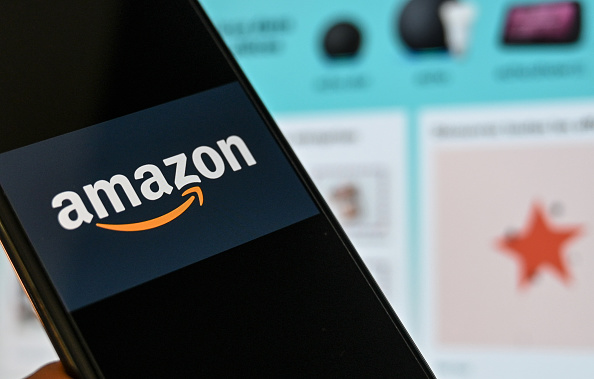The world of B2C sales is rapidly changing. While the messages we use to sell to customers are constantly developing, the hard sell is still a popular way for businesses to get to where they want to be. While other aspects of B2C sales, such as the terminology used, the benefits offered and the marketing message are changing and developing with the times, hard selling is going nowhere. It’s a method which may get results in some sectors, but it’s not one that customers are responding to positively.
These days, it’s all about brand loyalty. If you can get someone to purchase your product or service, then you’ve done a good job — but it’s not the whole job. The next challenge lies in keeping your customer, whether they’ve had a good experience with you or not. You want them to return, you want them to engage with you, and you want them to tell their friends and family about you in a positive way. So what’s wrong with the hard sell? And what’s the alternative?
Customer suspicion surrounding the ‘old school’ hard sell
In previous decades, it was normal to find salesmen and women at your door, peddling their wares with a well-rehearsed sales pitch. It was also pretty safe to buy from them. Unfortunately, as regulation of the sector remained almost non-existent, some salespeople became more and more pushy, using untruths and emotional blackmail in some cases to make a sale.
After being encouraged to sign on the dotted line before they are ready to make a decision and pushed into obligatory sales contracts one too many times in the past, the average consumer is a lot warier of any company using pushy sales tactics. These days, people tend to avoid engaging with door-to-door salespeople, as well as those who ‘cold call’ on the phone, as the method is generally deemed intrusive.
Scams involving telephone and door-to-door sales have been widely reported for years, and this has also created unease in customers. Should your sales strategy evoke similar feelings, you’re likely to find that your customers are not as responsive to your efforts as you might expect. Tailoring your sales strategy to your customers’ needs while avoiding scaring them off can reap much better rewards.
Pull over push
Pulling your customer in rather than pushing them into a sale works well for many companies in today’s climate. Due to the increase in competition in the digital age, businesses need to focus more of their attention and resources than ever before in order to set themselves apart.
The home improvement industry is a good example of this. For example, if you wanted double glazing in the past, you may be prompted by a visit from a door-to-door salesman, or you may reach out to a company who would then send someone round to give the hard sell. As customers are now wary of the tactics used by cowboy firms, they prefer to do their research before engaging with a salesperson. Pulling the customer in by offering free surveys and quotes, as well as allowing them to explore their options online beforehand with easy-to-use resources can dramatically boost the chances of both a sale and a continued relationship with your brand.
Speed of information
In the digital age, customers can find all the information they need to make an informed purchase faster than ever before. Your marketing efforts are no longer the sole pieces of information customers have about your business and your products or services. They can compare you with your competitors using customer reviews, online pricing and even how you deal with your customers on social media. The hard sell may not work on someone who already has plenty of information about your brand — indeed, they may have already made a decision based on information which is beyond your control.
For instance, if your rivals are making their full pricing structure known, a potential customer may not bother to get in touch to see what you charge. If they can compare a handful of other prices for the same thing, they’re likely to choose what suits them from that group, simply because it saves time. A company which is not in step with the others may be seen as behind the times and not worth bothering with during this initial research stage.
Laying your cards on the table
Being completely honest and transparent about your pricing, what is included in each purchase, and the various benefits for the customer if they choose to spend their money with you will help them to find and consider your offering. Brand loyalty is rewarded to those businesses who are loyal to their customers in return, and this involves trust. A brand must trust that their customers will make the right decision when presented with the facts — this can only be successful if the business works for the customer, and not solely for profit.
Returning to the example of double glazing sales, we can see that the landscape has changed. These days, you’re much more likely to be offered a free, no obligation quote. This allows the customer to make up their own mind and prevents them from feeling trapped into a sale. As customers have more power over their decision, companies have had to up their game when it comes to communicating the quality of the materials they use and the benefits of their customer service, something which can only be beneficial in the long run but which some have struggled to implement successfully.
Play to your strong points – work on the weak
Of course, when laying your cards on the table you may find that you come up short in some areas compared to your rivals. You should use this as a chance to learn and improve your products or the experience you offer customers. For example, if consumers are responding well to something that you don’t offer, it may be worth learning from the success of other companies in your sector and implementing changes within your own organisation. Otherwise, you’ll need to have extremely strong or unique benefits available in other aspects of the customer journey in order to draw customers in.
Listen to your customers, gain as much feedback as possible, and don’t ignore the bad reviews. Every interaction with a customer can help you hone your sales strategy, as the more you know about your target audience (and the more they know about you and what you offer), the better your chances of sales success.
Julian Betts is customer services manager at Evander.





